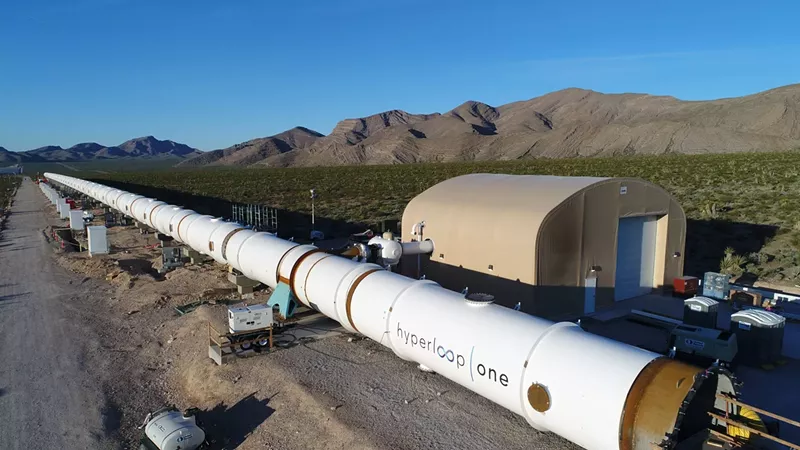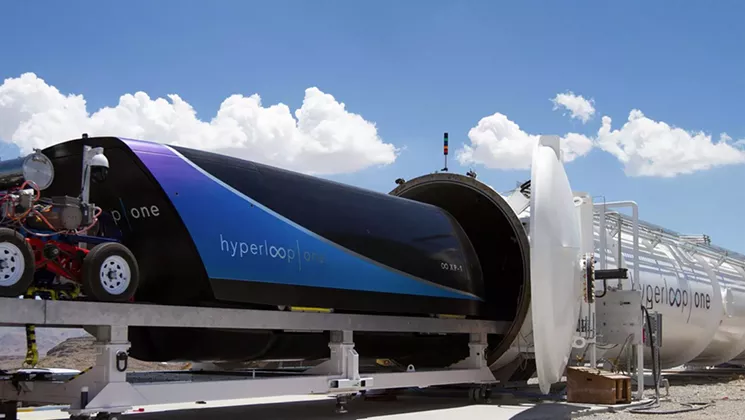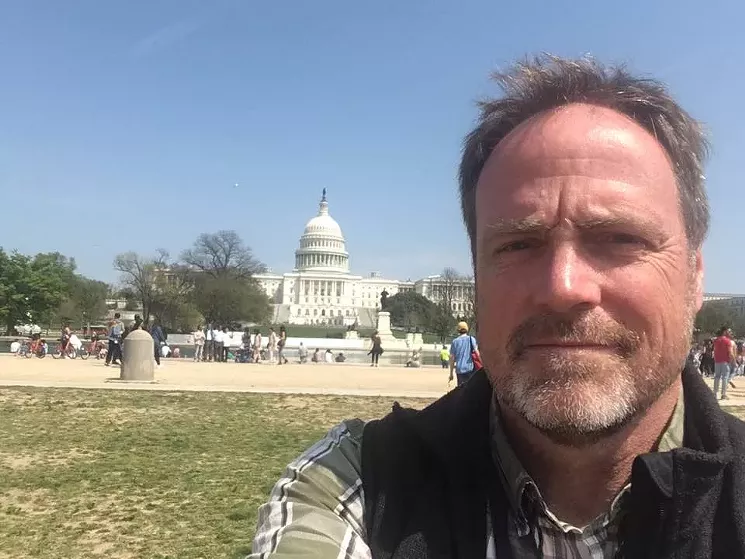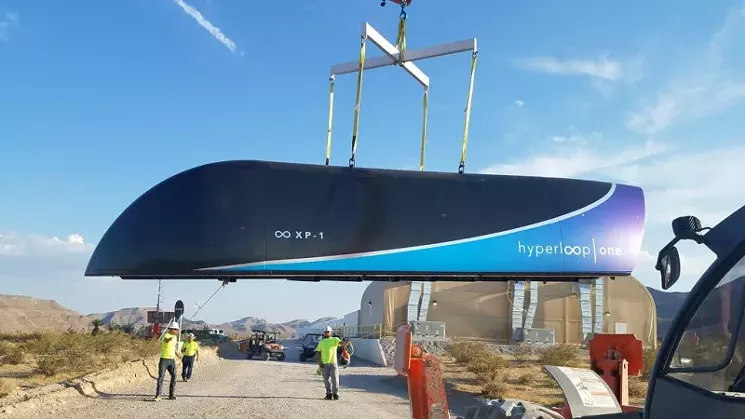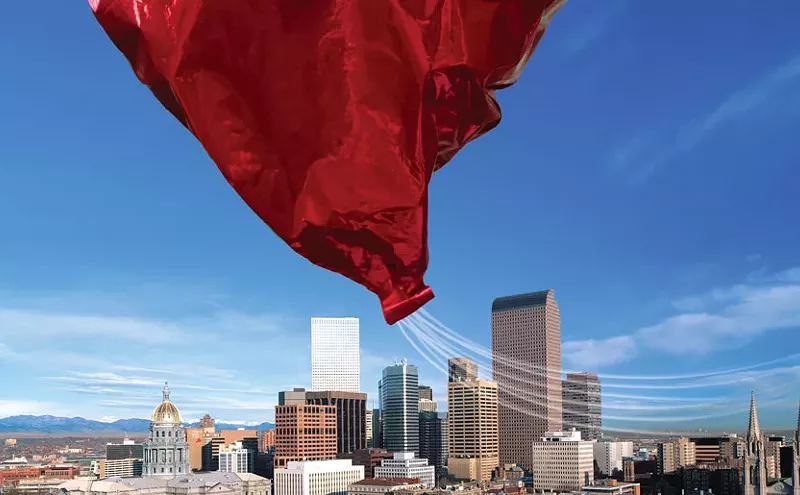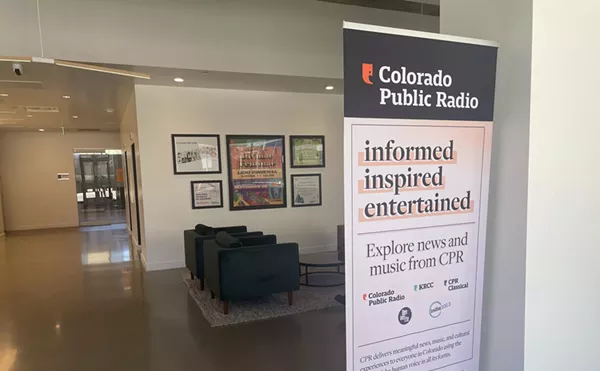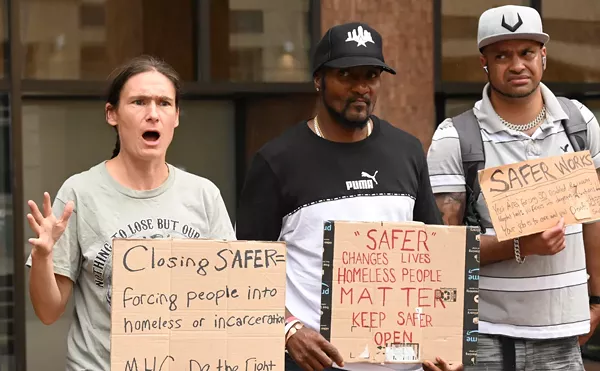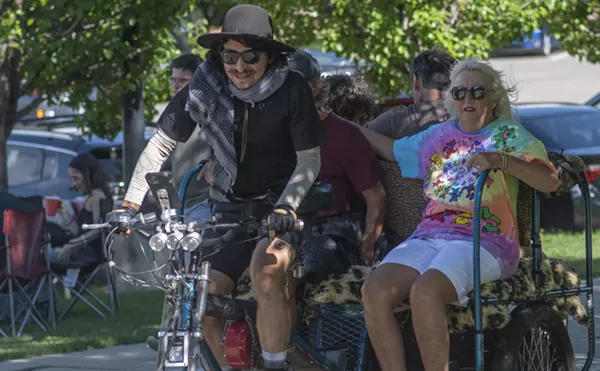"The deal-killer for anything above ground is that no above-ground pipe will ever survive the .50 caliber test," says Brad Swartzwelter, who is currently looking into penning a new edition of 2003's Faster Than Jets, which is currently out of print but can still be found on Amazon. "And the .50 caliber test is simple. If I walked up to the pipe that's sitting in Las Vegas" — a reference to a Hyperloop One test track in the Nevada desert that was introduced to the public in March — "and shot at it from 100 yards with a .50 caliber rifle, it would shoot a hole in the pipe. There's no way to stop the bullet with any kind of efficiency; it would take five inches of steel. And because of the low pressure in the pipe, that breech would create a wall of air inside that would have a crushing effect on a 700-mile-per-hour pod going through the middle."
Whether such an event would have horrific consequences is a matter of debate. In a recent post about Arrivo, a hyperloop-style project that agreed to build a test track near Interstate 25 and E-470 early next year, Shailen Bhatt, executive director for the Colorado Department of Transportation, said, "I asked the Hyperloop One chief engineer about catastrophic loss of pressure. The way he explained it was that it wouldn't be like when you're in space and everybody just disintegrates into goo. The vehicle would just lose its vacuum, slow down, go to the next station and stop."
With Arrivo, though, Bhatt noted that "there is no vacuum. It's open air, so there's nothing to pierce. There wouldn't be any issues with the vacuum, since there's no vacuum to lose." However, Arrivo's speed is expected to max out at around 300 miles per hour, about half of Hyperloop One's top pace, because the system lacks the vacuum component.
Swartzwelter makes his living as a conductor for Amtrak, but his interest in the future of transportation started him on the path to Faster Than Jets in the late 1990s. "I was living in Seattle at the time," he says, "and I was extremely frustrated with every mode of transportation being completely overloaded and congested up there. I wanted to know what the very best transportation system humans have the ability to build now would be, and after a lot of research, including trips to Germany and Switzerland, I came to the conclusion that the answer would be vacuum-tunnel magnetic-levitation transportation."
Basically, he explains, "you're creating outer space in a tube and zipping through it with the efficiency and ease that a satellite can travel around the earth."
As Swartzwelter notes, "The shortest distance between point A and point B is a straight line. So if you eliminate all curves and all hills, you're going to go that distance in the shortest amount of time. But there's another impediment: friction. Every little thing we have any contact with creates friction when we try to move, whether it's a train on a steel rail or a piston in a sleeve or a turbine jet inside a cowling. And the biggest form of friction is pushing through the air. So if you can eliminate any form of friction from the air, you can go along that straight line extremely rapidly and with very little energy. It's kind of like riding a bicycle downhill with a 100-mile-per-hour wind at your back. You can just keep accelerating."
Enthusiasm for the concept isn't universal. As we've reported, one of the most notable Hyperloop naysayers is Dr. Phil Mason, a former Cornell University chemist. An article in The Daily Caller, a conservative website co-founded by Fox News personality Tucker Carlson, divided Mason's objections to Hyperloop One into five main categories:
1: If Anything Goes Wrong, Everybody DiesSelections two and five, which pertain primarily to dollars and cents, wouldn't be addressed by putting Hyperloop One into tunnels, which is a pricey proposition. But Swartzwelter believes concerns about numbers one, three and four are another story.
2: It's Probably Physically Impossible To Build The Hyperloop
3: Heat Would Destroy The Hyperloop’s Track
4: Hyperloop Would Be Incredibly Vulnerable To Terrorism
5: The Hyperloop Will Probably Cost WAY More Than Its Formal Estimates
Tunnels are "an absolutely protected environment," he allows. "If anybody is able to get 150 feet below the surface to reach the vital component, the pipe, it will be noticeable long before they ever reach the pipe itself — or what I call the 'tube.' It would even be protected from a nuclear bomb strike. Let's say Kim Jong-un succeeds and is able to strike Colorado Springs, which is a rich target for an enemy" as well as being along the main Pueblo-to-Cheyenne route foreseen by the folks behind Rocky Mountain Hyperloop, one of ten winners in the aforementioned Global Challenge. "It would have little effect on a transportation system 150 feet below the surface."
Another advantage for tunnels: "Getting through the environmental impact on the surface is almost impossible. Purchasing land from land owners that you would have to drape a pipe across is outrageously expensive. If you're going to keep that straight line, you're going to have no choice about where it's going to wind up, and the people who own the land over which the pipe will drape will be able to gouge the government, even with eminent-domain clauses. But legislation could be created rather easily to give eminent domain at 150 feet, because the land owner won't have the value on the surface affected in any way. Just as I have no right to charge United Airlines for flying over my house, I can't charge Hyperloop for going beneath my house."
What are some of the other reasons for tunneling? "First of all, if you have the slightest curve at 700 miles per hour in a pipe, it's going to smash everybody up against the side, and it would take three counties to make a right-hand turn. There's a concept in guideway systems where you have to be able to come to a complete stop at any point on the track and not tip over, and a track can't be built with the same kinds of banks as an airplane can take. Curves are devastating to the concept of people traveling through pipes."
Moreover, "while the initial capital cost is high, the land cost is far cheaper — so the cost is in the construction, not the land. Secondly, the maintenance of tunnels is extremely cheap, because you don't have any temperature fluctuation, you don't have any weather changes, there's no ultraviolet degradation, and the sun isn't pounding down on it constantly. One of the big problems in any surface guideway system, including railways, is thermal expansion. Things expand and contract with temperature, and that makes it very difficult to keep a pipe airtight. But that's much less of a problem underground."
Of course, "everyone always thinks about earthquakes and how everyone would be crushed in one," Swartzwelter acknowledges. "But in fact, the opposite is true. In earthquakes, tunneling systems survive very well. Right after the World Series earthquake in California that knocked down the Nimitz freeway and a piece of the Bay Bridge [in 1989], the Bay Area Rapid Transit system was operational. These systems are built to last. The tunnels built for the Tube in London or the Metro in Paris are some of the earliest tunnel systems of the industrial age, and they're still being used. In the book, I even mention that one tunnel, the Siloam Tunnel, still works today, 3,000 years after it was built by King Hezekiah. So the idea of building a tunnel system is expensive for the current generation, but unlike a road that has to be constantly repaved, it should be fully functional for hundreds of years without major reinvestment."
Given that Hyperloop's main test tracks are above ground, company decision-makers would seem to have come to far different conclusions than Swartzwelter — but he believes otherwise.
In his view, "Elon Musk understands, because he just bought a boring company to dig tunnels underneath L.A. to relieve congestion. [Musk shared photos of the firm's first efforts in late October.] And Hyperloop One has talked about having a lot of tunnels, as well — because I think they know there's no way this concept can succeed on the surface."

